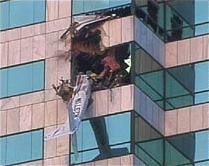What I try to teach the owners that I interact with is this: The Annual is merely an inspection of the aircraft's current condition... The number of discrepancies and the follow-on maintenance required will vary depending on the actual condition of that aircraft. I normally start with a detailed review of the logs, as that is a great indicator of the amount of care that the aircraft has actually received.
Flip back and review the logs of any classic aircraft, and you'll see many years where the logbook entries for the annual inspection (with follow-on maintenance accomplished) are comprised of a couple of pages of carefully-written entries. Conversely, you're also likely to see quite a few "rubber stamp" annuals that look like they could fit the entire logbook entry on a single 1" x 3" address label. Neither on their own actually mean that the airplane isn't airworthy, but the latter seems to be the pattern where you find extensive "make-up" maintenance to be needed!
Back on topic: I recently charged a friend/owner 15 hours for the "annual inspection" for his Pa-24-250 Commanche, which IMHO is quite low for the type of aircraft. CAVEAT**-- it was an owner-assisted annual, and he did nearly all of the disassembly/reassembly of the aircraft under my supervision, and this 15 hrs didn't account for ANY follow-on maintenance.
In that 15 hours of inspection time, I found 57 separate discrepancies (not bad for a 1963 Aircraft). 14 of which were possible airworthiness issues that needed to be examined further and/or corrected before flight (including a couple cracks in the underfloor area). I signed off his annual, gave him the signed list of discrepancies and gave him full disclosure that he was in no way obligated to hire me to do the repairs. He did choose to hire me for the repairs, and it took roughly another 15 hours (of my time) to get his bird airworthy again (he additionally logged at least 15 or so more in simple repairs that he did on his own under my supervision). BTW, he probably spent another whole day or more putting the airplane back together!
Does every bird need ~45 hours of maintenance each year to keep it airworthy? Maybe?
Our 1962 Cessna 210 has been in the family now for almost a year. I've considered it airworthy for less than half of that time. During the first annual I accomplished, I found 145 separate maintenance discrepancies (with a percentage of airworthiness issues as well). (I looked at nearly a dozen vintage Centurions, and this was the best one I was actually able to go see.) Side Note: I've done extensive upgrades over the last 12 months too ;-)
Thankfully, my list of items remaining from that inspection is now down to about 8, all of which I have plans to repair in time for the next annual inspection ;-) Our next annual will likely be a "piece of cake" by comparison...
15 hours or so? Pretty standard work, I'd say...

